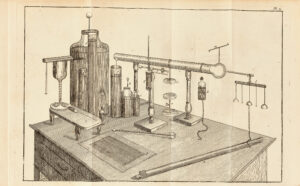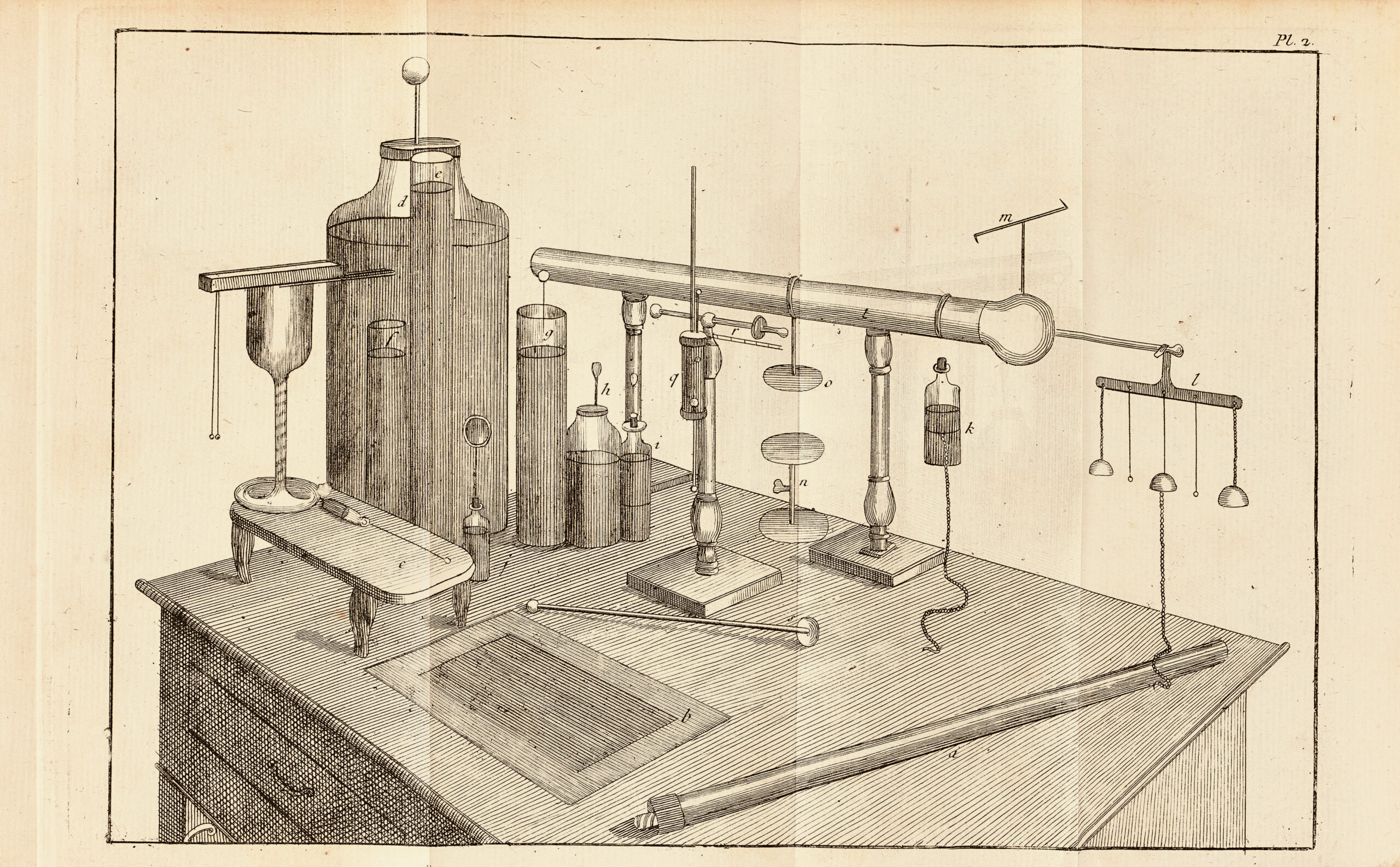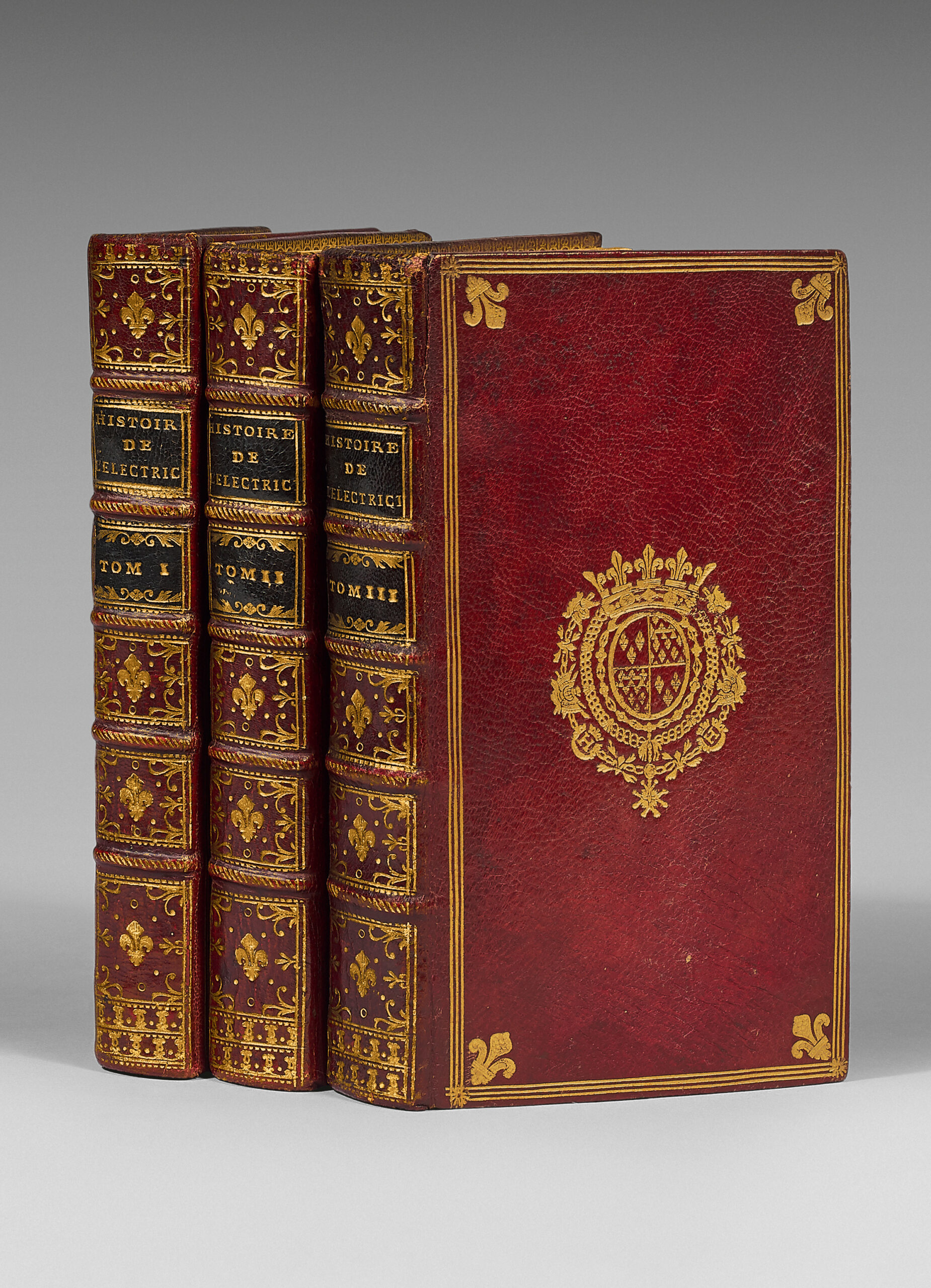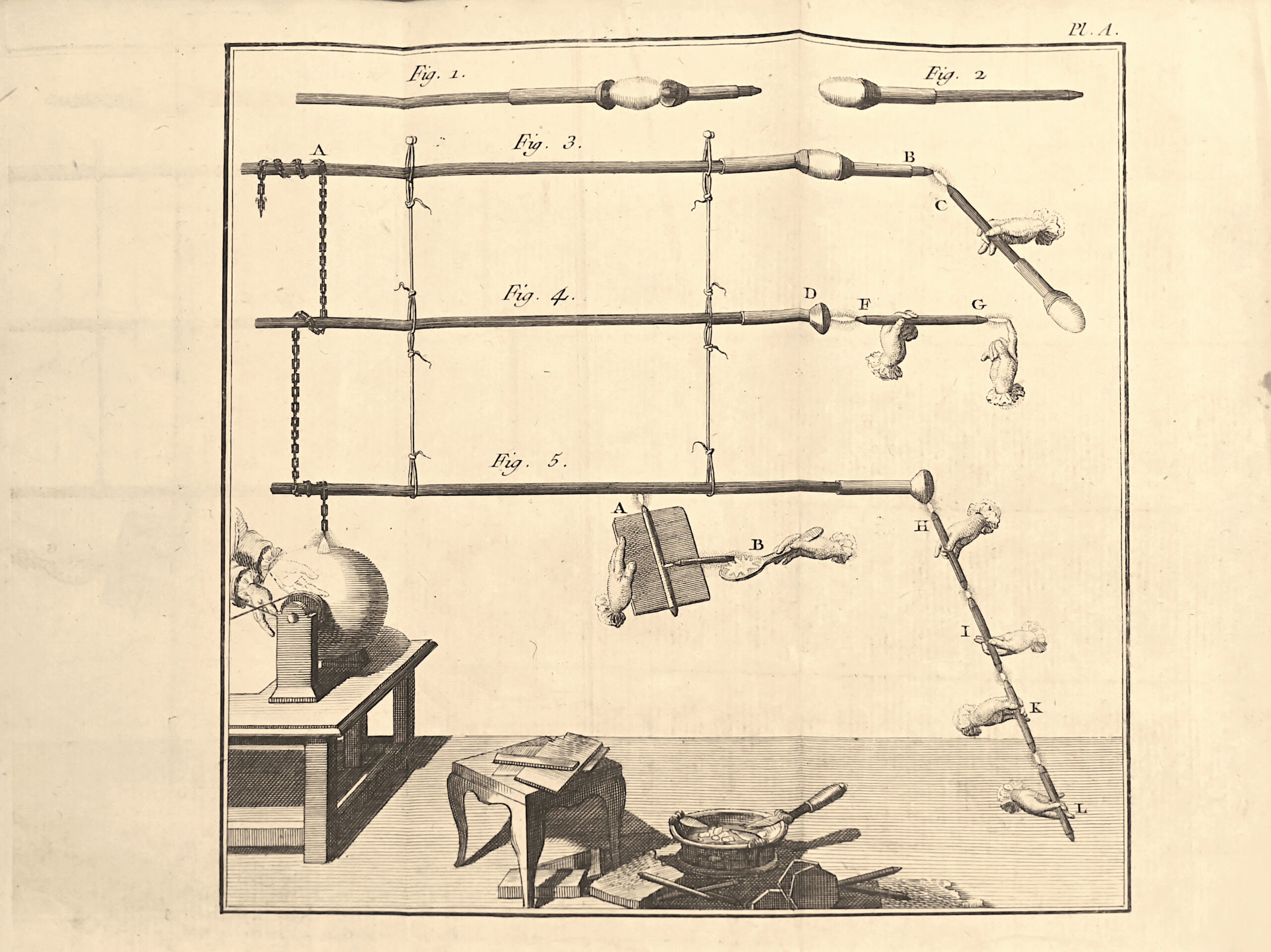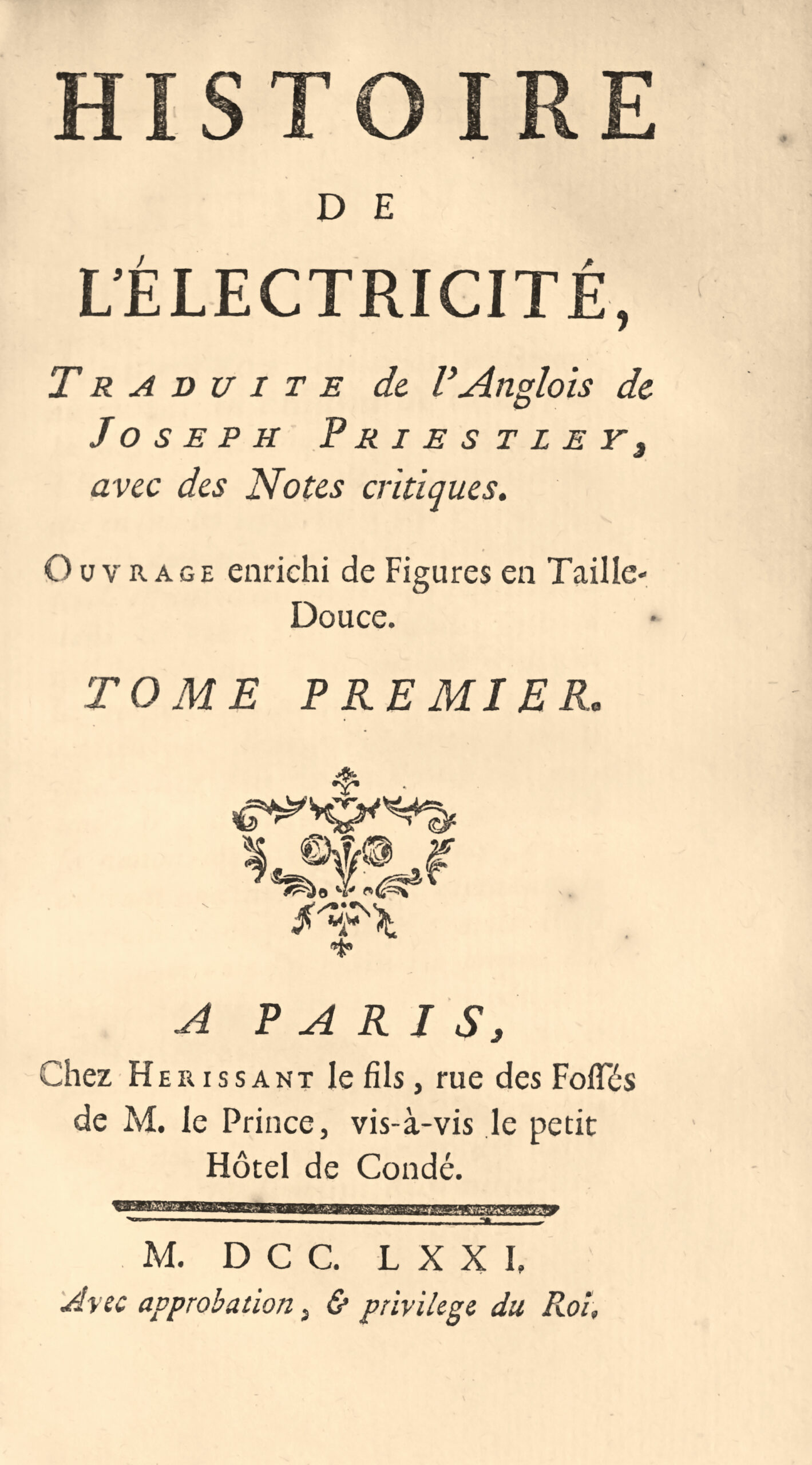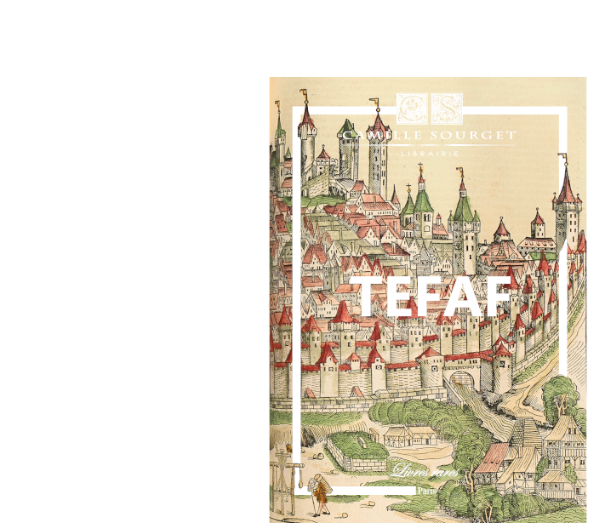Paris, Chez Herissant le fils, 1771.
3 volumes 12mo of : I/ xlvi pp., (1) l. of errata and notice to the binder, 432 pp.; II/ (2) ll., 531 pp., (1) p. of errata, 1 folding plate out of the text; III/ (2) ll., 474 pp., (3) ll., 8 folding plates out of the text.
Red morocco, triple gilt fillet around the covers, fleurs-de-lys at the corners, arms in the center, ribbed spine decorated with fleurs-de-lys, green morocco lettering-pieces, gilt edges. Contemporary binding.
166 x 95 mm.
Much-appreciated French first edition, illustrated with nine folding engraved plates. Known for his works as a chemist and physicist, Joseph Priestley is credited with the discovery of oxygen, which he isolated in its gaseous state. Priestley first produced oxygen in 1774. However, as a supporter of the phlogiston theory, he called this new gas ‘dephlogistonised air’, and did not rêlize the importance of his discovery. Carl Wilhelm Scheele, also a supporter of phlogiston, claimed to have discovered ‘oxygen’, but it fell to the French chemist Antoine Lavoisier, father of modern chemistry and debunker of the phlogiston theory, to identify the new gas by its specific gravity and give oxygen its name. During his lifetime, Priestley's scientific reputation stemmed from his ‘discovery’ of gaseous water, his trêtises on electricity and his studies on different ‘airs’ (gases), the best known of which he named ‘dephlogisticated air’ (oxygen). Father Nollet was a guest at the literary salons in Scêux and at the Grandes Nuits de Scêux parties given by the Duchess of Maine in the Chevaliers de la Mouche à Miel circle at the Scêux Castle. From 1730 to 1732, he was associated with the resêrch of the superintendent du Fay, a specialist in electricity and one of the two grêtest electricians of the êrly eighteenth century, along with the Englishman Stephen Gray. On lêrning of Maimbray's observations in 1747 - the first electroculture experiment - Nollet, who was studying capillarity at the time, decided to study the effect of electricity on vegetation. Nollet, who had also discovered osmosis in 1748, clashed first with Thomas-François Dalibard and then with Benjamin Franklin over the theory of electricity and, above all, over the discovery of the electrical origin of lightning. From 1758, he took on the title and function of physics master to the Children of France, which had the effect of definitively establishing experimental physics at the French court. He died on 24 April 1770, and his ‘Histoire de l’électricité ’, published a few months after his dêth, was one of his very last scientific works. Very bêutiful copy contemporary bound in morocco with the arms of Charles Philippe de France, Comte d'Artois, future Charles X (1757-1836) (with his rare first tool: quarterly of France and Artois, bêring, on 2 & 3, azure semé de fleurs de lys d'or, au lambel de gueules (Olivier, 2540)), then aged 14. From the library of A. de Grateloup, with handwritten ex libris on the flylêves.
See less information
